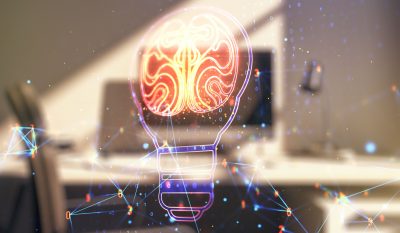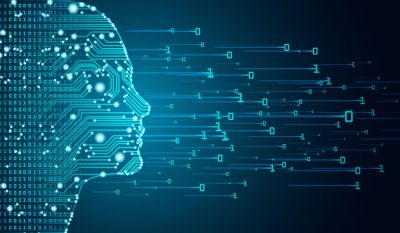When you type an incorrect term into Google’s search bar, the search results will appear on the screen alongside a suggested alternate spelling. Have you ever considered why something like this takes place?
One of the widespread applications of machine learning (ML) in our everyday lives is in this type of efficient web search.
Day-to-day activities are heavily influenced by machine learning, from movie recommendations on Netflix to making payments with Amazon Pay. In the business world, there are no exceptions to this too!
Knowing how machine learning can help your company, as it rethinks its tactics to provide individualized service to customers and increase income, is crucial. Today, active usage of machine learning is taking place, and maybe in a far larger number of contexts than one might anticipate! Across the globe, companies are rapidly adopting this technology to revolutionize a variety of business operations.
As a result of this digital transition – products, services, and workplaces are increasingly incorporating machine learning to streamline, automate, and perfect their processes.
Nearly 29% of firms are using ML projects, according to 451 Research’s Voice of the Enterprise: AI and Machine Learning Use Cases survey. Since 94% of ML adopters report effective activities, this rapid uptake is hardly surprising.
These ML adopters are experiencing several advantages, such as increased employee efficiency and reduced expenses, due to employing the technology to extract insights from enormous amounts of data far more quickly than employees could do alone.
Despite its advantages, adopting machine learning is far from simple; businesses must overcome many obstacles to ensure successful ML implementations.
But first, now that we have a brief idea about ML is, let us understand its different types.
There are primarily four distinct categories of machine learning, each distinguished by its approach to and techniques of learning. They are:
1. Supervised Machine Learning – Supervised learning is a type of machine learning in which the system learns from preexisting examples. A machine learning algorithm is given a dataset by its operator that describes the desired inputs and outputs, and it must figure out how to generate those values. The algorithm recognizes patterns in data, learns from observations, and produces predictions while the operator has access to the correct answers. The algorithm generates predictions, and the human modifies its course as necessary. This cycle repeats itself until the algorithm achieves a high degree of accuracy and performance.
2. Machine Learning Without Supervision – While supervised learning relies solely on labelled data, semi-supervised learning makes use of both labeled and unlabeled examples. Labeled data, is information that has been annotated with relevant tags so that the algorithm can interpret the data, whereas unlabeled data is data that has not been annotated. This combination allows machine learning algorithms to train on unlabeled data and produce labels for it.
3. Reinforcement Learning – In this case, the machine learning algorithm is looking for trends in the data. There isn’t a manual or human operator to help you out. As an alternative, the computer analyses the facts at hand to draw conclusions about the connections and patterns within them. In an unsupervised learning scenario, the machine learning algorithm is given access to vast data sets and is expected to draw its own conclusions and act based on those findings. The program tries to organize that data in some way to explain its structure. Achieving this goal could involve clustering the data or rearranging the pieces in a way that is more pleasing to the eye.
4. Semi-Supervised Machine Learning – Using a machine learning algorithm that is given a prescribed set of actions, parameters, and target values, reinforcement learning emphasizes structured learning. After the rules are defined, the machine learning algorithm attempts to explore several options and possibilities while closely monitoring and evaluating the outcomes to choose the best one. The machine learns from its mistakes with the help of reinforcement learning. It remembers the things it’s done before and starts changing its strategy to get the greatest potential outcome.
Given that we’ve understood the types of ML, know that the adoption of a new technology is no cake walk. Let us understand what obstacles organizations face when implanting ML.
Organizational Barriers to Machine Learning Adoption
It’s common knowledge that only some businesses can derive substantial value from their data assets today.
For companies just starting on their data-driven journey, tackling a machine learning project of any significant size can be an overwhelming prospect.
The inability or reluctance to test and experiment and rigid business processes that stifle innovation are the fundamental causes of this dismal success rate.
Experts in the field of machine learning have high hopes for businesses, but only if those in charge can get past these three significant roadblocks.
1. Inaccessibility of data and security concerns
Though most businesses with machine learning initiatives have access to massive amounts of data, not all of it is in usable form. Because information is frequently stored and processed in isolated silos, bringing it together can be a tedious process. Due to the prevalence of private or sensitive information in practically every dataset, firms must also think about data security before extracting it. As a result, it may be necessary to encrypt or obscure data before feeding it into a machine learning model. These data access issues are a major roadblock for businesses that wish to make systematic use of their data assets, but there is a straightforward solution.
When companies keep personal and highly sensitive data in a secure location, the need for data protection might be reduced. The next step is to remove any personally identifying information from the less sensitive data and deliver that information to the trusted teams. By establishing a “Digital Democracy” culture, to borrow a term from Walmart, businesses will be able to access data on demand, share it with internal and external teams, and make better decisions based on the information. This would make it simple to work with third-party vendors and speed up the development of Proof-of-Concept initiatives.
2. Reluctance to experimenting
Testing and experimentation are crucial to machine learning technologies for companies seeking business prospects. To show the algorithm’s efficiency, you must test it against real data. A historical test using prior data is possible in some instances. In prescriptive analytics, a machine learning model must be applied to the business process to analyze the business effect. Most firms, especially those just starting their digital transformation, are wary of undertaking large-scale machine learning programs that haven’t proven their worth. Thus, firms are reluctant to undertake such projects.
Companies should encourage experimentation and offer the infrastructure to overcome this obstacle and allow the smooth adoption of machine learning technologies. To prevent “Digital Democracy” from becoming “Digital Anarchy,” teams should operate and test diverse techniques in isolated sandboxes. Data transfer to functioning IT systems should also be limited.
Such infrastructure will allow for the construction of a true testing environment where multiple tools and approaches can be tried and compared to ensure the best one goes into production. “Next Best Offer” marketing, in which a recommender system offers the item most likely to be bought by a certain customer, can only be tested in a field test by comparing real customer purchases to those of a control group.
Different teams can construct competing models when a corporation offers free access to depersonalized data. After splitting their audience into representative groups, the corporation exposes “streams” of customers to rival alternatives. After evaluating the data, the best strategy can be adopted across the board and a small piece left to run on a different mechanism to allow for continued comparisons should the preferred approach fail.
3. To achieve data science success, businesses must first give up on inflexible business practices.
Machine learning, like any other revolutionary technology, calls for a shift in worldviews, expertise, and even physical setup. Because of the necessity of deviating from standard procedures to launch, grow, and succeed, agility is the only tool up to the task.
With more adaptable business procedures in place, businesses will waste less time and resources on failed initiatives. By embracing the concept of “fail quickly, learn fast,” as well as facilitating ongoing comparisons and rapid-fire test projects, businesses can accumulate valuable experience and progress toward a more robust machine learning strategy.
The impact of machine learning on businesses
To cover the basic minimum of what’s needed to deploy and maintain an ML model, you may anticipate spending roughly USD 60K during the first five years. Remember that this minimal system won’t scale and won’t have any essential features, causing performance to degrade with time.
You should anticipate spending closer to USD 95,000 during the first five years on the features needed to deploy an ML model while also building a scalable infrastructure to enable future modeling activities.
Enterprises can free up time and skilled labor for model design and obtaining critical business insights by pursuing data management skills with integrated machine learning.
Machine learning is a kind of artificial intelligence that allows computers to teach themselves new skills and improve their performance based on what they’ve seen before. The algorithms in machine learning can process massive amounts of information. Algorithms are trained using data, and then use that training to create a model and carry out a task.
The capacity to obtain suitable algorithms should be evaluated by entrepreneurs. Without an on-staff data scientist or ML professional, creating suitable algorithms to develop machine learning models becomes challenging, if not impossible. Businesses should be proactive and look for ML products that can address their needs when they lack this expertise, whether they have pre-built algorithms or straightforward construction tools.
Looking Ahead
The advantages of using ML in the firm will probably outweigh any short-term difficulties in the long run.
Fortunately, many vendors have created platforms and tools to deal with these problems, streamlining insights and lowering costs to enable more companies to succeed with their ML initiatives.
There are some suppliers that include built-in algorithms and automated support features in their platforms to let users create and use models without consulting a data scientist or machine learning specialist.
These tools can also be used for data management and preparation, thus allowing existing data scientists to devote more time to advanced analytics and less time to data preparation and processing.
Enterprises must also consider various other difficulties as machine learning (ML) becomes more common. These issues include operating at scale, deploying across environments and monitoring for Model Drift. (Model Drift refers to a model’s ability to forecast changes in the environment over time.)
Many vendors provide tools to solve these issues. ML is the foundation that can be used in many domains and applies to any industry vertical.
This technology can help eliminate unpredictable outcomes, update software and streamline corporate procedures.









